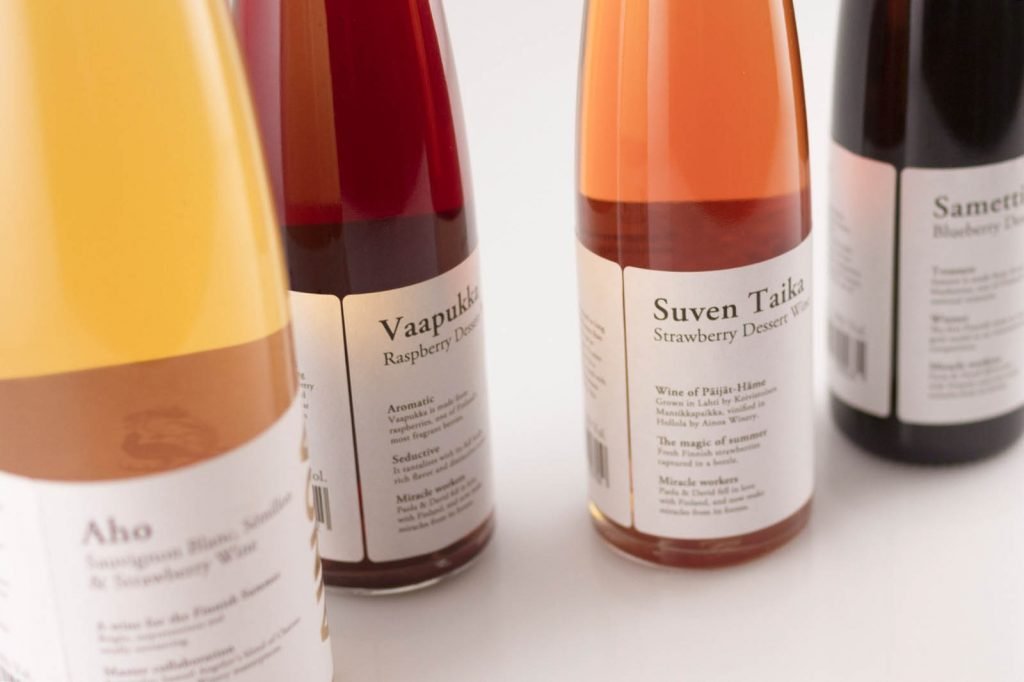The Secret Behind Finland’s Wine Revolution

[ad_1]
When David Cohen and his wife, Paola, moved to Finland from Massachusetts in 2008, they were hobbyist winemakers. They decided to run a small country vineyard as a side project.
Their first big challenge? Learning to make wine from berries, due to heavy regulations on producing grape wine in Finland.
Before Finland joined the European Union (EU) in 1995, there was a small number of local vineyards producing berry and grape wines. But during EU negotiations, ministers were presented with a choice: Finland could either be an Arctic country and collect energy subsidies for home heating, or a wine-producing country, which comes with different subsidies.
EU rules dictated it was impossible to be both. Partly bureaucratic and partly diplomatic, this stance was also intended to avoid a rupture with traditional wine-producing nations like France and Italy, whose wine industries are heavily subsidized by the EU.

And so, Finland gave up the right to produce and sell so-called “wine” made from domestic grapes. Instead, it must be labeled a “mild alcoholic beverage fermented from grapes.” Still, few produce it.
Following these EU negotiations, it became legal for anyone to pick the abundant berries indigenous to Finland, inspiring many Finns to produce wine from the fruit they gathered. But, most of what was produced was considered undrinkable by locals. As a consequence, Finnish berry wine quickly acquired a negative image.
“It was boom and bust,” says David of the EU decree. “It killed the industry.”
Undeterred, the Cohens spent a few years figuring out how to make wine using cloudberries, lingonberries, blueberries, raspberries and sea buckthorn. In 2014, they established Ainoa Winery, located less than 90 minutes north of Helsinki. They use “the red wine method” to extract flavor from the fruits’ skins, which David Cohen says is different from other Finnish fruit winemakers who he believes produce their wine without skin contact.
But selling Finnish berry wine proved harder than making it. Paola took it to restaurants all over Finland, but once restaurateurs learned it was local, they refused to taste it.

Heidi Mäkinen, sommelier and Master of Wine, first encountered Ainoa at a 2016 wine expo in Helsinki.
“When I tasted the product, it was intense,” says Mäkinen. “The flavors were pure, which has to do with the maceration method. So, if it said cloudberry, it tasted like cloudberry. A lot of other wines were very hollow in their structure and didn’t taste like the products they were made of. You could definitely taste something in the glass that was different.”
Through sheer persistence and word of mouth, the Cohens managed to get a few sommeliers to taste their wine. The turning point, David says, came in 2017, after Ainoa’s raspberry wine won not only gold, but also a Vinalies Trophy, the highest award given by the Oenologues of France. It was the first berry wine and the first Nordic wine to win.

“After we won this award, prestigious Finnish restaurants bought in,” he says. “In 2017, our restaurant customer list matched the Michelin list for Finland.”
Since then, the organization has awarded five more gold medals to berry wines, all of them from Ainoa. The Cohens’ winery boasts a total of 13 awards, including several from northern California. They now produce 12 berry wines.
“We sparked a revolution, but it’s not just us benefitting,” says David. “There’s a whole industry now, with 25 commercial vineyards and public perception of what’s possible has changed.”
The Cohens have inspired a number of vintners, including Kaisa Auer, who took over her family’s small vineyard, Teiskon Viini, in 2018.

“What changed when David came along was, he had a greater vision of taking the wines outside Finland to competitions and that has helped make our wines known abroad and also at home,” Auer says.
In 2018, the Finnish Food Culture Association officially honored the Cohens for significant contributions to the evolution of Finnish food culture.
These accolades couple with cultural shifts to build demand for domestic wine, even though prices are higher than imported bottles.
“Finnish people are becoming more adventurous,” Auer says. “Typically, they haven’t been. I’ve seen this change in the last 15 years.”

Winemaking is more experimental, too. Asko Ryynänen joined Hermannin Viinitila, one of Finland’s oldest vineyards, in 2015 as production manager. He’s part of a new generation taking a more experimental approach.
“Old guys are retiring and newer people are trying to change things,” says Ryynänen.
Previously, he says, Finnish wine was homespun. “Now it’s much more professional. We don’t want to talk about berry wines anymore. We want to talk about Arctic wines. We are using everything from the forest, including spruce tips. Ainoa has done it, and we are planning to do it also.”
[ad_2]




